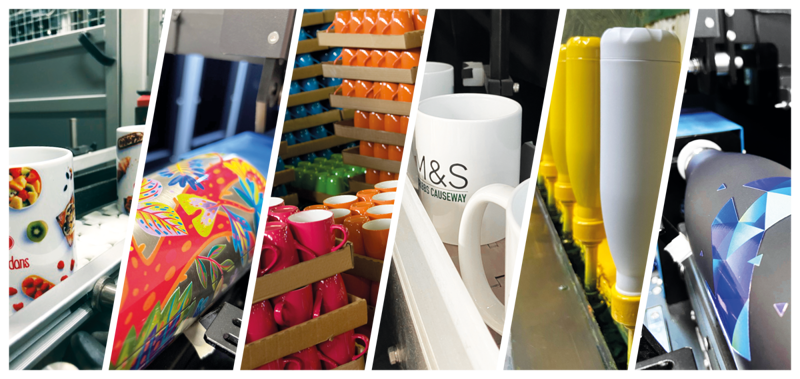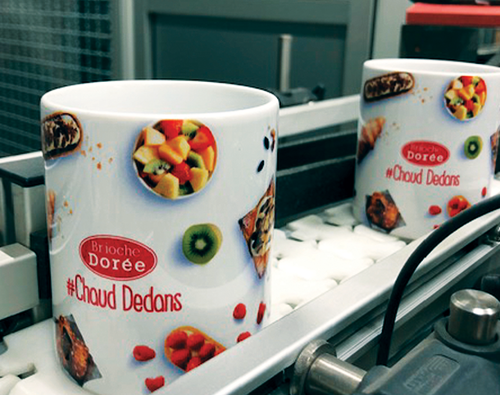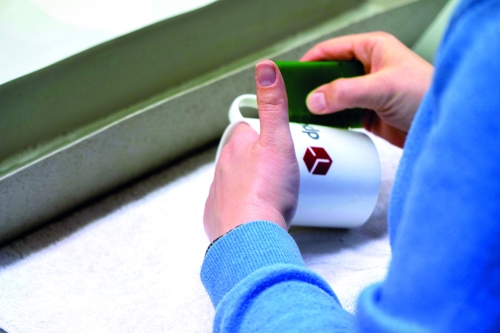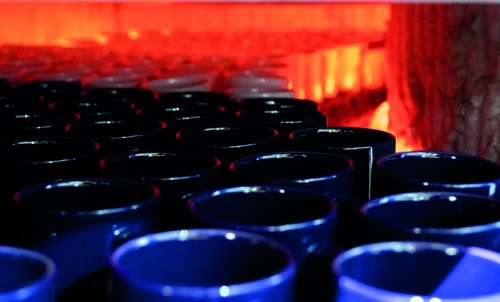
While the mug itself will generally be made overseas, much of the value - your branding - is added right here in the UK. You’ll find three main techniques can be used to decorate your mug - screen print, transfer print, and sublimation print.
Sublimation printing is one of the most popular methods to achieve a full colour print. A transfer print is created using special inks, and this is then applied, with heat, to a product that is either polyester, or has a polyester coating - such as a mouse mat, t-shirt, or in this case, a mug.
Alastair Corbett-Marshall, from our Derbyshire drinkware factory, tells us more. 
“The transfer print is wrapped around the mug, held in place tightly, then sent down a conveyor belt into a kiln. One it’s taken off at the other end, the transfer paper is removed, and then you are left with the artwork fired into the glaze itself.
“The print possibilities with this method are good - you can print top to bottom, and up to within 10mm of the handles.”
Alastair explains that there is a new machine on the horizon, too.
“The Sublatron has two robot arms inside - one top wrap the transfer, and the other that places the mug into an in-built oven for firing - it’s significantly faster than the long kiln option we currently use.”
While sublimation can achieve a great full colour print, the style of mug you can print on is more limited.
It has to have a white glaze, as the print does not include a white ink, and the mug sides have to be straight for the print to transfer effectively.
For designs on more interesting mugs, or in more unusual decoration positions, you can use a transfer print.
 “It might remind you a little bit of a waterslide temporary tattoo. The transfer is wet, positioned in place by hand, with a ‘cover coat’ to hold it in place.
“It might remind you a little bit of a waterslide temporary tattoo. The transfer is wet, positioned in place by hand, with a ‘cover coat’ to hold it in place.
“As the mug goes through the kiln, the clear cover is burnt off, and the artwork is then fired on to the glaze,” says Alastair.
The possibilities a transfer print allows are diverse. “You can basically put a transfer print anywhere on a mug”, Alastair continues. “We often see base prints, text along the inside rim, inside base print, and we can do a ‘flash’ on a handle, too. We’ve seen people put prints through the middle of handles - it does add time on to the order, as there’s a lot of manual labour to get it right, but it can look fantastic.”
Transfer print is also used for designs that need to be on a coloured or shaped product with multi coloured print - it can achieve a much tighter registration - the gap between colours - than a screen print, as the transfer is produced ‘as one’ using lithographic print before application.
With this much creativity, the days of a black logo on a white mug should be well and truly over.
Back to ideas